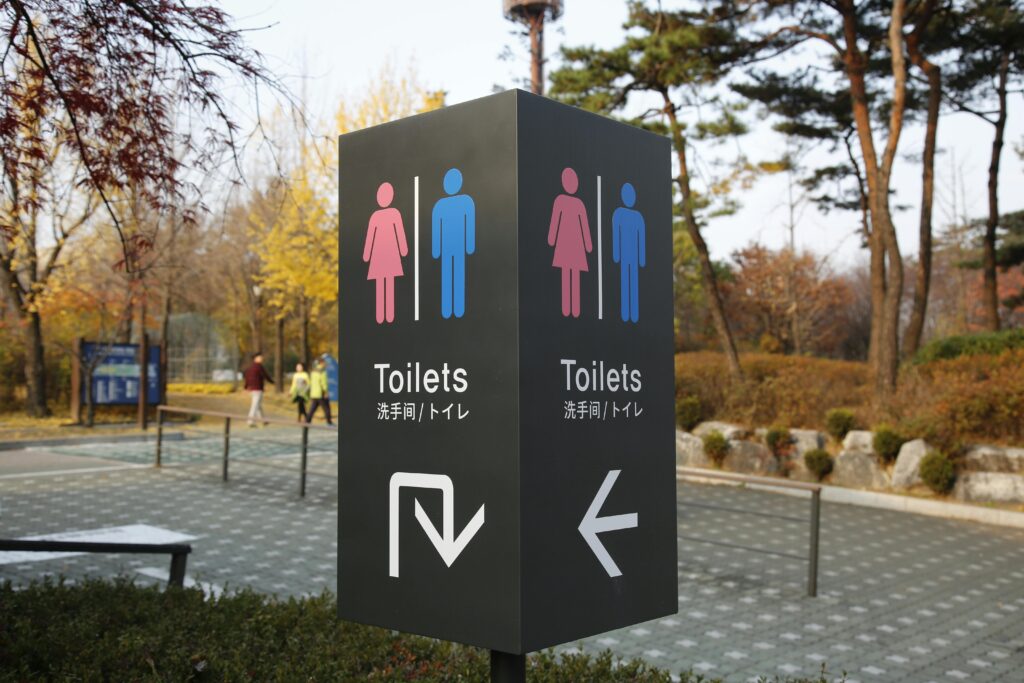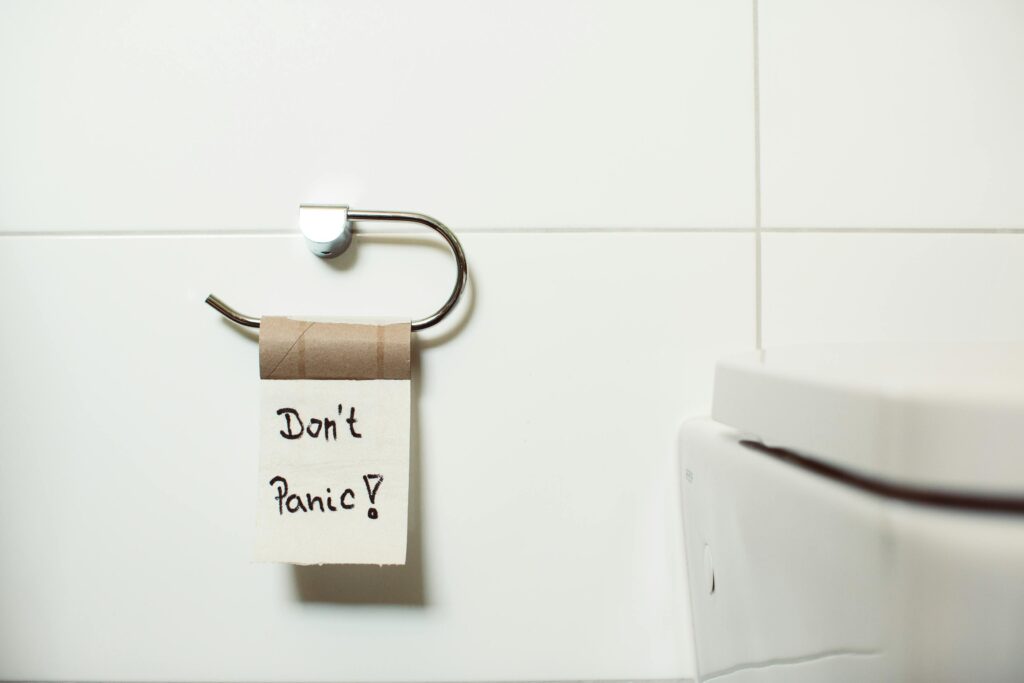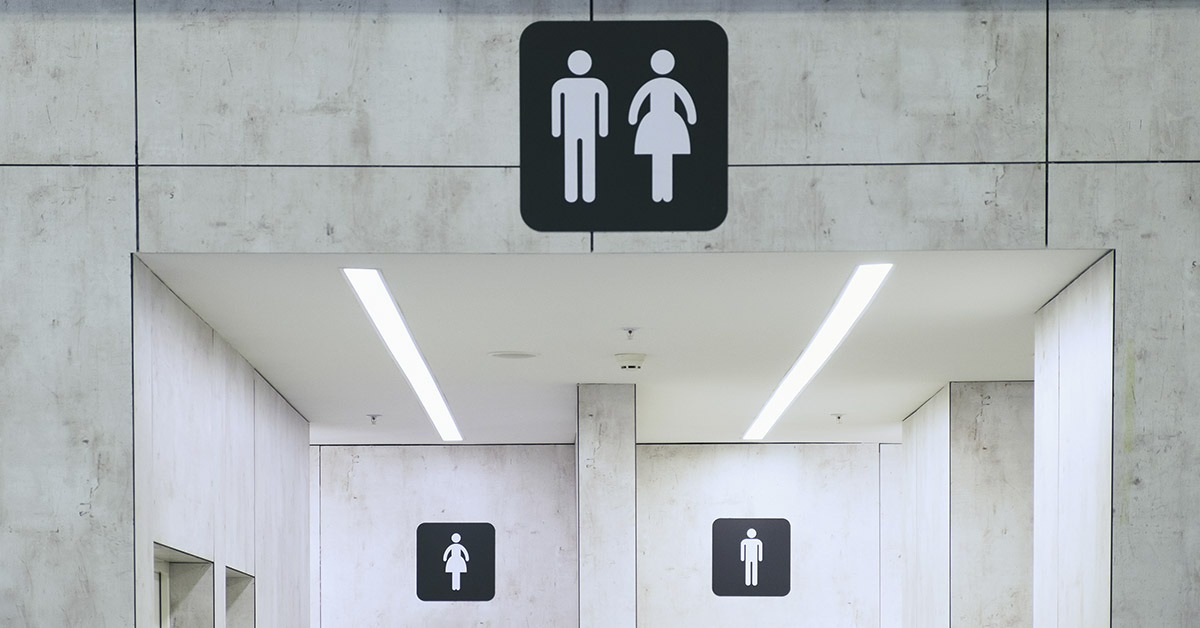A clip shared by China Insider has left Reddit users completely taken aback. It features one person scanning a QR code on a toilet roll dispenser. Once the QR code is scanned, users are subjected to an advertisement before several papers are released. The motivation behind this technology is to cut down on wastage and theft. However, some users online compare this system to something out of the Netflix series “Black Mirror.”
QR Codes and Ads in Chinese Restrooms

Modern public restrooms worldwide continue evolving as China’s dystopian advertising model raises questions about the future of basic sanitation access.
These toilet roll dispersers require a few steps before the roll disperses any toilet paper. First, people scan a QR code on the dispenser using their smartphones. Next, they watch a mandatory 30-second advertisement. When the commercial finishes, several squares of paper get released automatically. This practice has sparked outrage from many users online. Certain concerns about accessibility and capitalising on basic sanitation have been raised.
The Alternative Payment System

While Chinese restrooms demand advertisements for toilet paper access, this simple message reminds us that basic dignity shouldn’t require technological barriers.
If users require more paper and want to bypass another 30-second advertisement, there is an alternative payment system as an option. Another inconvenient step, the machine charges users the equivalent of 6 cents to skip the advertisement. However, users online have expressed concern over those experiencing technical difficulties with their smartphones, such as low batteries or lack of internet access. This may leave these customers without toilet paper in compromising situations.
The Waste Prevention Argument
According to Chinese authorities, this technology is meant to reduce toilet paper wastage. Chinese authorities believe people take more from free rolls than they really need. They also claim that this has significantly reduced toilet paper waste and theft in areas where the technology has been implemented. Authorities also claim it solves previous problems, such as public bathroom users taking excessive amounts of toilet paper home in bags. China has implemented such restrictions previously.
Back in 2017, China installed facial recognition systems at toilet paper dispensers at Beijing’s Temple of Heaven to prevent theft. The technology would dispense a fixed amount. If you need more, there’s a 9 minute cooldown period before dispensing more toilet paper to the same person.
China’s Toilet Paper Cultural Context
To those outside of China, this may seem abhorrent and exploitative. However, those who recognise the cultural context and China’s system understand that public restrooms in China traditionally lack free toilet paper provision. One long-term resident even stated that they “Lived in China for 7 years, this is an improvement”. Toilet paper in public bathrooms is a rarity. Tourists are frequently reminded to carry toilet paper with them when travelling around China, as places may not have any.
Public Outrage and “Black Mirror” Comparisons
Reddit users have made comparisons to the technology to Black Mirror while other users have jokingly commented “Brown Mirror” and “Sometimes yellow mirror.” Other users critically scrutinized the technology, seemingly being international commentators weighing in on Reddit. One supposedly American user posted: “This would last about 5 seconds in America before it got smashed.” Critics worry about accessibility issues for users without smartphones or internet access. The system creates potential hygiene problems when technology fails during urgent situations.
Read More: Disturbing video shows what happens if you don’t close your toilet lid before flushing
America’s Pay Toilet Era
While social media seems surprised by China’s “pay-to-pee” model, a good portion of the 20th century saw the pay toilet model for public toilets. By 1970, an estimated 50,000 pay toilets operated across the United States. Installing pay-toilets rarely generated profit for city governments due to maintenance costs.
The barrier of payment was thought to discourage drug use and sexual activity. However, a larger issue emerged regarding gender equality in bathroom access. While toilets were subject to fees, urinals remained free for male users. This meant men had freedom to empty their bladders without charges. Women looking to use stalls had to pay for the same basic biological function.
Pay Toilets Today
While pay toilets remain an endangered species in America, they still exist elsewhere in the world. European cities like Paris, London, and Amsterdam still require payment for restroom access. New York City maintains some pay toilets despite state-level bans from 1975. San Francisco’s Good2Go app connects users with touchless restroom facilities for fees. The service charges between 99 cents for single use up to monthly passes.
Human Dignity vs. Profit
The primary question asked is whether basic human needs should generate profit or marketing revenue. Access to sanitation is a basic human right according to the United Nations declarations. The right to sanitation entitles everyone to have affordable access to all spheres of life. Charging for bathroom access could violate these rights by discriminating against people who cannot afford payment. Public toilet access affects human dignity and basic participation in society. Those without access face serious health risks and social exclusion. However, supporters argue that fees help maintain cleaner, safer facilities for all users.
Read More: People Shocked to Learn Reason Public Toilet Doors Don’t Touch The Floo

